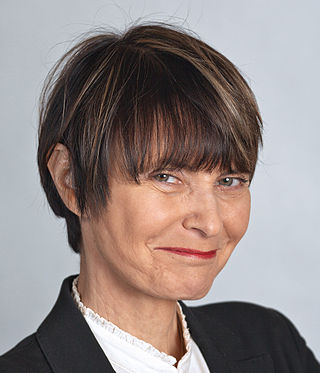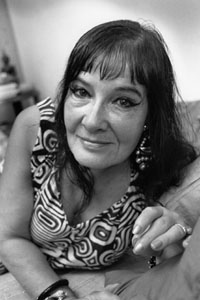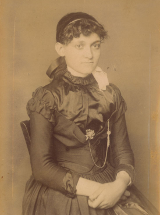
Ella Maillart was a Swiss adventurer, travel writer and photographer, as well as a sportswoman.

Micheline Anne-Marie Calmy-Rey is a Swiss politician who served as a Member of the Swiss Federal Council from 2003 to 2011. A member of the Social Democratic Party (SP/PS), she was the head of the Federal Department of Foreign Affairs during her tenure as a Federal Councillor. She was President of the Swiss Confederation twice, in 2007 and 2011.

Grisélidis Réal was a writer and sex worker from Geneva, Switzerland.

Geneva railway station, also known as Geneva Cornavin railway station, is Geneva's main train station, located in the centre of the city. The immediate area surrounding it is known as Cornavin; both names can be used interchangeably.

Nicolas Bouvier was a 20th-century Swiss traveller, writer, picture editor and photographer. He studied in Geneva in the 1950s and lived there later between his travels.

Banque Cantonale de Genève (BCGE) is a limited company established under Swiss public law, resulting from the merger of the Caisse d'Épargne de la République et Canton de Genève and the Banque Hypothécaire du Canton de Genève. It is one of the 24 cantonal banks.

Jean-François Bergier was a Swiss historian. He was a professor at the University of Geneva from 1963 to 1969 and at the Swiss Federal Institute of Technology in Zurich until his retirement in 1999.
Lolette Payot-Dodille was a Swiss-French tennis player.

The history of women in engineering predates the development of the profession of engineering. Before engineering was recognized as a formal profession, women with engineering skills often sought recognition as inventors. During the Islamic Golden Period from the 8th century until the 15th century there were many Muslim women who were inventors and engineers, such as the 10th-century astrolabe maker Al-ʻIjliyyah.
Léon Savary was a Swiss French-speaking writer and journalist from Payerne, Vaud.

Virgile Rossel was a Swiss jurist, politician and writer. He was President of the Swiss National Council in 1909/1910 and President of the Federal Supreme Court 1929–1930.

Marguerite "Meggy"Frick-Cramer, born Renée-Marguerite Cramer, was a Swiss legal scholar, historian, and humanitarian activist. She was the first woman to sit on the governing body of an international organization, when she was made a member of the board of the International Committee of the Red Cross (ICRC) in 1918.

Ariane Laroux is a Franco-Swiss painter, draughtsman and printmaker. She is known for her black and white drawings, using void and empty spaces in her artworks. She has drawn portraits of renowned activists, while interviewing them, paying attention to having exactly the same number of women and men portraits in her books. She has exhibited several examples in the British Museum.

Erna Hamburger was a Swiss engineer and professor. In 1957, she became professor of electrometry at the University of Lausanne. She was the first woman in the history of Switzerland to be named a professor at a STEM university.
Marguerite Champendal (1870-1928) was the first woman from Geneva to obtain her doctorate in medicine at the University of Geneva (1900). She founded a center for distributing pasteurized milk for infants there, as well as an acclaimed nursing school.

Rita de Morais Sarmento was a Portuguese civil engineer, the first woman to earn a degree in the subject in Portugal and probably the first woman to graduate as a chartered engineer in Europe.
Mauren Brodbeck is a Swiss contemporary artist.

Lynn Bertholet is a transgender Swiss woman, bank executive and photomodel. She is also co-founder and chairperson of charity ÉPICÈNE, a volunteer public utility body which aims to welcome and support anyone facing transidentity issues.

Laurence Boissier was a Swiss writer, artist, and architect.

Caroline Dayer is a Swiss feminist researcher, educator and writer specializing in gender studies. She is known for her engagement in LGBT rights and makes regular interventions as an expert in the media in Switzerland on issues like homophobia, sexism and street harassment.

















